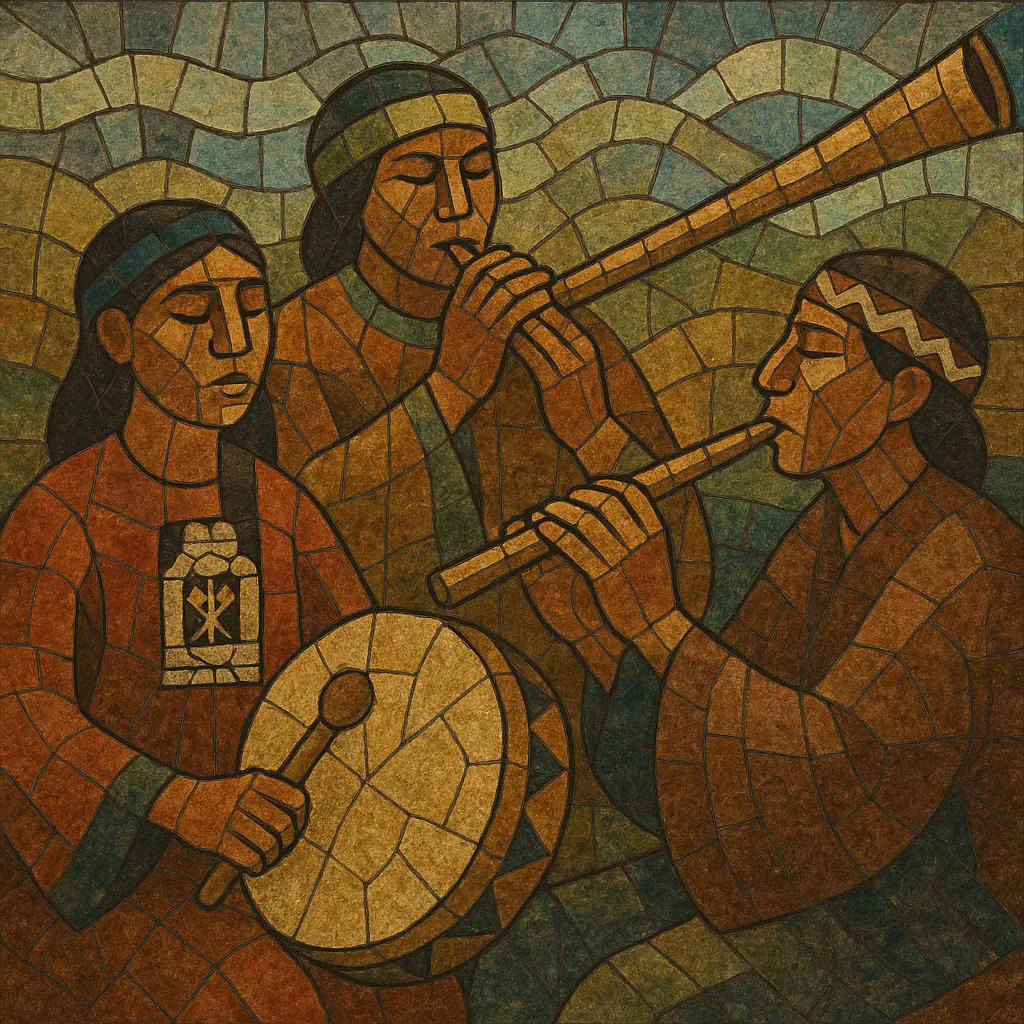Mapuche folk music is the traditional music of the Mapuche people of south‑central Chile and parts of Argentina. It centers on voice, ritual percussion and aerophones, and is inseparable from Mapuche cosmology, language (Mapudungun), and communal ceremony.
The sound world is marked by the kultrún (a sacred frame drum) that provides steady pulses and ceremonial accents; the trutruka (a long natural trumpet) that provides powerful, droning calls; the pifilca (end-blown whistle) that adds piercing melodic figures; and the trompe (jaw harp), whose buzzing timbre articulates intimate, rhythmic ostinati. Singing styles (ül, tayül) range from free, incantatory laments to responsorial chants with simple, repetitive melodies—often in pentatonic or anhemitonic modes. The result is a music that can be meditative, communal, and trance-inducing, but also celebratory and dance-oriented in social contexts.
Mapuche musical practice predates European contact and is embedded in Mapuche cosmology (kimün) and social life. Songs (ül) and ceremonial chants (tayül) were, and remain, vehicles for memory, healing, prayer, and storytelling. The kultrún—painted with cosmological symbols—anchors rhythm and ritual, while instruments like the trutruka and pifilca project sound across open landscapes.
From the 1500s onward, contact with Spanish settlers introduced new instruments (e.g., guitar) and social pressures that reshaped performance contexts. Despite displacement and cultural repression, Mapuche communities sustained ceremonial music in ngillatun and other rituals, maintaining language, rhythm, and timbral identities. Some syncretic practices emerged in frontier towns, yet core ritual forms remained community-held.
Ethnographers, folklorists, and community custodians began recording Mapuche repertoire in the early-to-mid 20th century, preserving vocal styles and instrument craftsmanship. In Chile and Argentina, indigenous and folk revivals raised visibility. Artists and researchers helped present Mapuche music on stages and records while advocating for cultural rights and language revitalization.
Today, Mapuche folk music continues in ceremonial spaces and community gatherings, and it coexists with contemporary presentations in theaters and festivals. A new generation of Mapuche artists performs traditional repertoire, composes new songs in Mapudungun, and collaborates across genres (from folk and nueva canción to rock and hip hop), extending the sound while honoring ceremonial roots.


